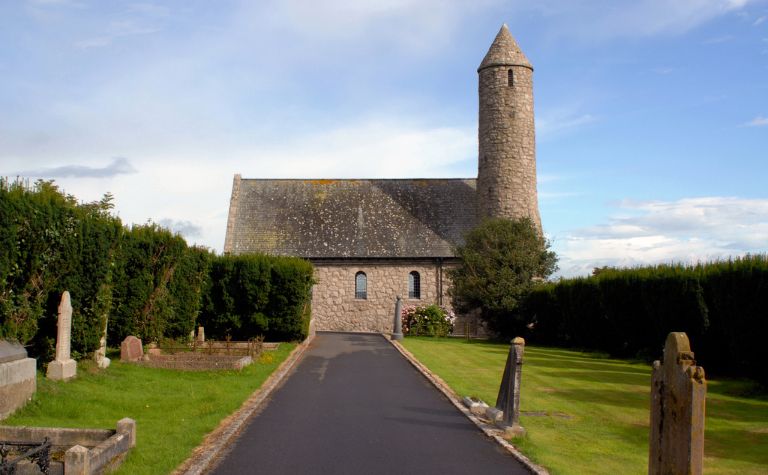Many people know that “Episcopalian” and “non-denominational” describe different kinds of Christian churches. They know the traditions have some overlapping beliefs and similar practices because they are both branches of the Christian faith, but they aren’t exactly sure what the differences are between them.
The Episcopal Church is part of the worldwide Anglican Communion, with roots in England, that experienced a branding shift during the Revolutionary War in America. Non-denominational churches are not connected to a historic branch of Christianity. The majority are Protestant and conservative.
Why does each of these traditions have such a strong presence in America? Are Episcopal and non-denominational churches conservative or liberal? What do they believe about God, the Bible, and the end times? Keep reading to learn the answers to these questions and others.
Also, see Episcopalian vs. Assemblies of God: What’s the Difference? to learn more.

Episcopalian and Non-Denominational Churches: Comparison
The Episcopal Church and the non-denominational church movement have narratives in which America plays an important role.
The Episcopal Church, though its origins are in England, adopted the label “Episcopal” in America (more below). Non-denominational churches arose, in part, because of the religious freedom that American laws value.
| Episcopalian | Non-Denominational | |
|---|---|---|
| Name | From the Greek word for “overseer” and the Latin word for “bishop,” the term refers to a form of church government that locates ecclesiastical authority in the office of bishop as opposed to the papacy or congregational membership. The term also describes the largest tradition in the Anglican communion in America. | “Non-denomination” simply means that a church isn’t connected to a historic branch of Christianity, like Roman Catholicism, Eastern Orthodoxy, or Protestantism. It’s also disconnected from Protestant denominations like Methodist, Baptist, Lutheran, Presbyterian, and others. |
| Origin | The Anglican tradition dates to the time of King Henry VIII (1491-1547) and his protests against the Catholic church. Anglicanism arrived in America when settlers arrived from England. The “Episcopalian” church dates to the time of the Revolutionary War (1775-1783) when terms like “Anglican” and “Church of England” were out of favor. | Since non-denominational churches are disconnected from each other, they have different founding dates. Non-denominational churches started growing in number and in popularity in the 2nd half of the 20th century as mainline churches became more liberal. |
| Branch of Christianity | Because its part of the Anglican Communion, many people consider Episcopalianism halfway between Protestantism and Catholicism. Many theologians and historians posit that a church can’t be “halfway Catholic,” so it’s best to consider the tradition Protestant with aspects of Catholicism woven into certain churches. | The vast majority of non-denominational churches are Protestant, evangelical, and conservative. The movement, in large part, was a reaction to perceived liberalism that arose in mainline churches in the 20th century. |
| Early contributors | King Edward VI (1537-1553), Queen Elizabeth I (1533-1603), theologian Richard Hooker (1554-1600) | The non-denominational church movement is the result of independent bodies of believers starting unaffiliated churches. Therefore, each church has founders and early contributors, but the movement as a whole doesn’t. |
| Episcopalian | Non-Denominational | |
|---|---|---|
| Organization | The word “episcopal” comes from the Greek word for “overseer” and the Latin word for “bishop.” It refers to a form of church government that locates ecclesiastical authority in the office of bishop as opposed to the papacy, like in Catholicism, or the congregation, like in some Protestant traditions. | Non-denominational churches are organized in that they each have a church government, which is usually congregational. There is no regional, state, or national organization. |
| Authority | Historically, Episcopalianism, like the Anglican communion, values the Bible. The tradition affirms the Apostles’ Creed and the Nicene Creed. The Book of Common Prayer is also a pivotal document to the heart and identity of the tradition. | As conservative Protestants, the vast majority of non-denominational churches uphold the Bible as the sole authority for establishing doctrine and practice. |
| Divisions | The denomination called the “Episcopal Church” is the largest by a significant margin. Denominations and churches have split over theological, political, and social issues. Examples of contentious topics include women in ministry, allegations of devaluing Scripture, and issues related to same-sex marriage and gender identification. | Divisions aren’t part of the non-denominational tradition because each church is independent. However, non-denominational churches sometimes have internal conflicts like any other church. |
| Social worldview today | The “Episcopal Church,” the largest communion in America, is socially and theologically liberal. | Non-denominational churches tend to be conservative theologically and politically. |
How do non-denominational churches find pastors and ministers? In many traditions, churches call pastors who went to a seminary that is associated with their denomination.
For example, Baptist pastors often graduate from Baptist seminaries, and likewise with Lutherans, Methodists, and others. Many non-denominational pastors attended similar schools but chose to serve outside the traditions associated with their education.
Episcopalian Denominations In America
| Episcopal Denominations | Reported Membership |
|---|---|
| Episcopal Church | 2 million |
| Anglican Church in North America | 112,000 |
| Continuing Anglican Churches | 100,000 |
| Reformed Episcopal Church | 15,000 |
Also, see Episcopalian vs. Eastern Orthodox: What’s the Difference? to learn more.

Episcopalian and Non-Denominational Churches: Similarities and Differences
What are the “high church” and “low church” Anglicanism and Episcopalianism? The high church wing emphasizes the tradition’s similarities to Catholicism and practices aspects of High Mass. The low church wing emphasizes the tradition’s similarities with Protestantism and its roots in the Reformation.
- Today, some Episcopalian congregations in America emphasize beliefs and practices that are considered Catholic.
- Other churches are aligned with conservative evangelical theology, some of which embrace charismatic expressions of worship and prayer.
- Still, other Episcopal churches have largely abandoned historical Catholicism and Protestantism and have adopted liberal and progressive social-political convictions and have less theological focus.
| Episcopalian | Non-Denominational Churches | |
|---|---|---|
| View of the Bible | Traditionally, the “low church” has a high view of Scripture in alignment with Protestantism. The “high church” values Scripture plus ecclesiastical tradition. Liberal and progressive congregations have decentralized Scripture. People can read deutero-canonical literature or the Apocrypha, but they can’t be used to establish doctrine. | Most non-denominational churches have a high view of Scripture. Some churches, especially those in America, use the terms “inerrancy” (the Bible has no errors) and “infallibility” (the Bible is unable to error) to describe their convictions. |
| View of God | Episcopalians believe in the Trinity; there is one God who exists in three persons. The Father, Son, and Holy Spirit are each fully divine. | Non-denominational churches affirm the doctrine of the Trinity like all historic Christians do. Father, Son, and Holy Spirit are each God, yet there is one God. |
| View of Christ | Historically, Episcopalianism has affirmed that Jesus is the second person of the Trinity. He is God in human flesh. He is 100% God and 100% man. Jesus was born of a virgin, lived a sinless life, died as an atonement for sin, was physically resurrected on the third day, and ascended into heaven. | Similarly, Jesus is 100% man and 100% God. He lived a sinless life, died on the cross as an atonement for sin, rose three days later, and ascended into heaven. |
| View of Salvation | Episcopalianism’s roots in Anglicanism are closer to Calvinism than Arminianism. However, Arminianism grew to characterize and influence the tradition more. Today, liberal and progressive congregations are ecumenical and inclusive of other religions. | Non-denominational churches, like other Protestants, believe that people are saved by grace, through faith, in Christ alone, based on Scripture alone. A non-denominational church may be Arminian, Calvinist or Reformed, Baptist, or something else. |
| View of the Holy Spirit | The Holy Spirit is the third person of the Trinity. He is fully divine. Episcopalians are historically cessationists, yet some small communions practice charismatic worship (e.g., International Communion of the Charismatic Episcopal Church). | Non-denominational churches believe that the Holy Spirit is God. Regarding spiritual gifts, some non-denominational churches practice speaking in tongues, and some don’t. |

| Episcopalian | Non-Denominational Churches | |
|---|---|---|
| View of the Ordinances or Sacraments | All Episcopalian expressions recognize baptism and the Lord’s Supper. Those who have convictions that align with the high church recognize the other five that Catholicism does. The Anglican-Episcopalian tradition teaches that the sacraments are a means of grace, as in Catholicism. | Like other Protestants, non-denominational churches recognize and practice baptism and the Lord’s Supper or communion. These are the only sacraments that Christ himself explicitly taught. |
| View of the Lord’s Supper | Christ is present in the elements, but there is a mystery to it. The tradition doesn’t fully embrace Catholicism’s theology of the Eucharist but affirms that consuming the elements is more than simply a memorial practice. | The majority of non-denominational churches subscribe to the memorial view of the bread and cup, as opposed to transubstantiation, which Catholicism teaches, and consubstantiation, which Lutheranism teaches, or the spiritual presence of Christ that other traditions believe.* |
| View of the Baptism | Clergy baptize infants and adults; baptized individuals are “grafted into the church.” | Most non-denominational churches practice “Believer’s baptism,” which refers to baptizing those who profess faith in Christ. This may include children and young adults, but not babies and infants.* |
| View of the end times | Episcopalians believe in the Second Coming of Christ. The tradition’s eschatology is Amillennial, as opposed to Premillennial or Postmilennial. | Non-denominational churches can be Premillennial, Amillennial, or Postmillennial. The Second Coming of Christ is a central doctrine for non-denominational churches. |
*Why do many non-denominational churches seem Baptist? Many non-denominational churches have practices that are historically associated with Baptist traditions, like having a congregational government, practicing Believer’s Baptism, and holding to the memorial view of the Lord’s Supper.
Baptist churches and non-denominational churches both value corporate and individual autonomy. Congregations — that is, members — make decisions in such churches, not a regional, state, or national authority.
The individual makes a decision to be baptized, not their parents or pastor. Organizationally, Baptist and non-denominational churches tend to mirror the American values of freedom and individuality in some of their practices.
Also, see Episcopalian vs. Apostolic: What’s the Difference? to learn more.
Related Questions
Episcopalian and Baptist are two of the largest branches of the Christian faith in America, though churches belonging to each tradition can also be found around the world. Many people know that...
Many people have heard of the Episcopalian and Methodist denominations but don't know the differences and similarities between their respective churches. People may also be aware that both traditions...
